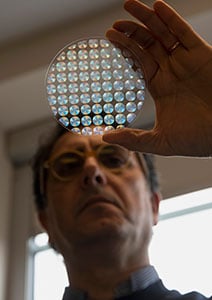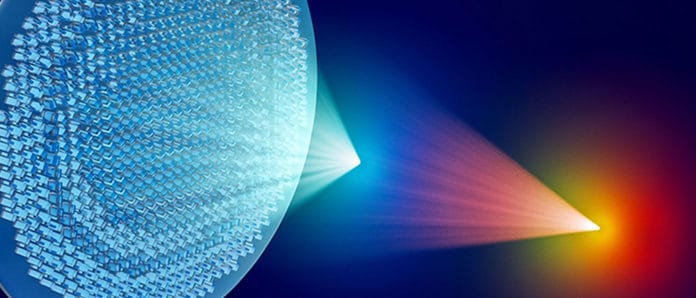The Nanostructured metamaterials have been engineered to generate a wide range of optical phenomena, allowing unprecedented control over light propagation. However, they are generally designed as single-purpose devices without a modifiable optical response, which can be a barrier to applications.
In a new study, scientists took a step toward making these metalenses more useful by making them reconfigurable.
Case Western Reserve University physics professor Giuseppe Strangi and collaborators at Harvard, harnessed nanoscale forces to penetrate liquid crystals between those microscopic pillars. This enabled them to shape and diffract the light in entirely new ways, thus tuning the focusing power.

Liquid crystals are especially useful as it is easy to manipulate them thermally, electrically, magnetically, or optically. This creates potential for flexible or reconfigurable lenses. This holds the promise to revolutionize optics as we know it since the 16th century.
Until now, once a glass lens was shaped into a rigid curve, it could only bend the light in one way unless combined with other lenses or physically moved. But, metalenses changed that. Metalenses allowed scientists to engineer the wavefront by controlling phase, amplitude, and polarization of the light.
In this effort, scientists moved these new class of metalenses towards new scientific and technological endeavors by controlling the liquid crystal. The aim is to generate reconfigurable structured light.
Case Western Reserve University physics professor Giuseppe Strangi said, “This is just the first step, but there are many possibilities for using these lenses, and we have already been contacted by companies interested in this technology.”
Fellow Case Western Reserve researcher Andrew Lininger said, “The part of the problem with current applications of metasurfaces is that their shape is fixed at the point of production, but “by enabling reconfigurability in the metasurface, these limitations can be overcome.”
Federico Capasso at Harvard University said, “Our ability to reproducibly infiltrate with liquid crystals state-of-the-art metalenses made of over 150 million nanoscale diameter glass pillars and to significantly change their focusing properties is a portent of the exciting science and technology I expect to come out of reconfigurable flat optics in the future.”
Journal Reference:
- Andrew Lininger et al., Optical properties of metasurfaces infiltrated with liquid crystals, Proceedings of the National Academy of Sciences (2020). DOI: 10.1073/pnas.2006336117
